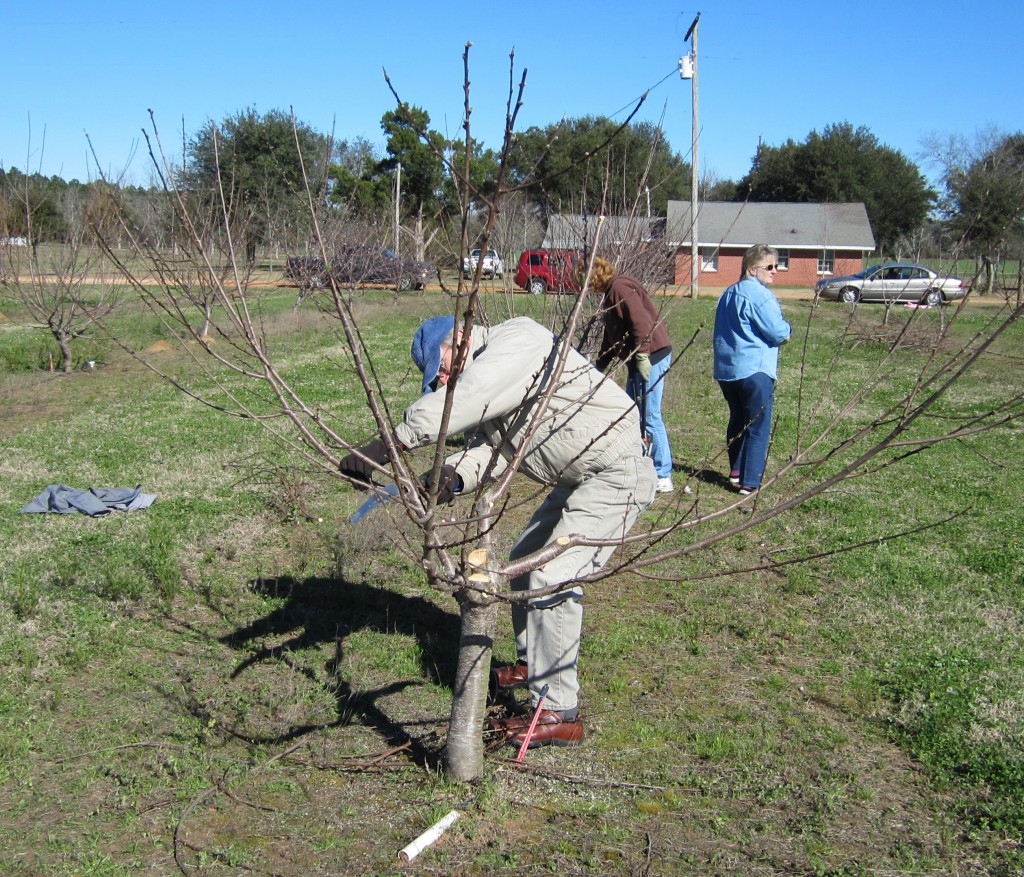February is not a month many think of as a big gardening month, although the preparation and maintenance practices performed in February can be critical to the success of an orchard for the rest of the year. Stone Fruit (Peaches, Nectarines) in particular need special care in the dormant season. During the dormant season pruning must be done to develop the best shape for the stone fruit species to bear fruit. Also, because of the disease pressures associated with stone fruit in Northwest Florida, some chemical sprays need to be added to the agenda in order to control disease and insect pests.
Pruning
Peaches and Nectarines should be pruned to an open center or vase shape. This will allow a well distributed fruit set to develop and will keep the crop load at a controlled amount that can produce quality fruit. During the first year of dormancy a main scaffold (3 or 4) should be chosen to form the open vase shape structure that is desired. The desired scaffolds should be 6 inches apart vertically and sit at a 45° angle from the trunk of the tree. At the second year of dormant pruning, two to three secondary branches should be selected off of each scaffold branch. Remove all of the other secondaries off of the scaffolds and prune back the selected secondaries to 20-36 inches. The following video by the North Carolina Extension Service will give a good idea how Peaches and Plums need to be pruned.
For more information on pruning: Training and Pruning Florida Peaches, Nectarines, and Plums
Dormant Spray
This time of year trees are dormant, so action is critical to stay ahead of disease and insect pests. Peaches and Nectarines need to be sprayed with several products in order to help guard against Scale insects and Mites, Bacterial Spot, and Leaf Curl. Dormant or horticultural oils need to be applied twice 10-14 days apart for Scale and Mites. Oil efficacy is determined by coverage, as the material suffocates pests. Oil sprays need to be performed when temperatures are between 40º and 85º F. Do not apply oil after bud break. A copper based fungicide labeled for stone fruit can be sprayed at this time of year for Bacterial Spot and a sulfur based product or Chlorothalonil need to be sprayed for leaf curl control. Do not apply copper products after blooms or leaves appear. Always follow the label when spraying products on fruit trees!
For more information on Peaches and Nectarines visit UF/IFAS Electronic Data Information Source.
- Mowing Your Lawn Correctly - July 21, 2017
- Landscape Pruning - May 18, 2017
- Choosing a Lawn Maintenance Company - March 9, 2017

